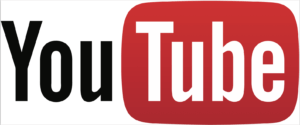2016 has been quite the year for most of us. We’ve walked miles for Pokémon GO, struggled for better streaming quality, and watched debates that changed the course of the nation forever. Thankfully however, the year is over, and we can reflect on what’s happened and how it affects us, particularly in the marketing sector.
Mobile Micro-moments

In our fast-paced society, advertisements need to be available to the consumer at every corner, taking advantage of those micro-moments that present themselves whenever an app is opened or a service is switched on. Mobile marketing was a huge prediction for 2016, and companies followed through by creating mobile-friendly websites, inventing personable apps, and embedding “buy now!” buttons in social media posts. Creativity thrived as photo-sharing apps like Instagram boasted trendy, eye-catching brands based on user interests. In fact, mobile display now accounts for 51% of digital display advertising, surpassing desktops at a rapid rate. This growth will continue, as eMarketer expects mobile marketing to reach 72.2% of total digital advertising by 2019, so keep those phones charged and ready.
Content Marketing and Video Advertising
 Content marketing has been increasing with the rise of social media over the past few years as writers focus on hyperbolic headlines in an attempt to use fewer words with greater impact. Additionally, video advertising saves huge amounts of time for the consumer, and is quickly becoming a preferred source of easily digested information. Brands are also delving into video production to make their company more personable to the viewer, and various apps are taking advantage of this new technique. Facebook released live streaming capabilities in April, and Instagram launched a similar service, called Instagram Stories, in August. Based on the amount of video time watched, the success of Twitter’s video streaming service, Periscope, has increased by nearly 200% since it was released last year. The nation watched presidential candidates debate live on YouTube; the video-sharing website boasts over one billion visitors each month. Netflix introduced offline viewing to the delight of over 44 million subscribers. Online users love watching entertaining videos, and companies did well this year in taking advantage of the opportunities presented to showcase their brands.
Content marketing has been increasing with the rise of social media over the past few years as writers focus on hyperbolic headlines in an attempt to use fewer words with greater impact. Additionally, video advertising saves huge amounts of time for the consumer, and is quickly becoming a preferred source of easily digested information. Brands are also delving into video production to make their company more personable to the viewer, and various apps are taking advantage of this new technique. Facebook released live streaming capabilities in April, and Instagram launched a similar service, called Instagram Stories, in August. Based on the amount of video time watched, the success of Twitter’s video streaming service, Periscope, has increased by nearly 200% since it was released last year. The nation watched presidential candidates debate live on YouTube; the video-sharing website boasts over one billion visitors each month. Netflix introduced offline viewing to the delight of over 44 million subscribers. Online users love watching entertaining videos, and companies did well this year in taking advantage of the opportunities presented to showcase their brands.
Following Through On Marketed Promises
This year, Niantic discovered that proper marketing and good content are necessary for the success of a game, instead of depending on past successes of previously built franchises. Pokémon GO was released this past summer, and while it initially had over a million users since it’s launch in July, over a third of its daily users quit playing by mid-August, including myself. This was primarily due to a series of poor updates and lack of communication between the company and the consumers. However, the app showed that users are eager for more augmented reality experiences, and marketers should capitalize on this information for years to come.
 Nintendo launched Super Mario Run in mid-December, but disappointed customers due to the need for a constant internet connection to play the game and the ridiculously high price of $9.99 for the full version. Although it is marketed as a “free” app on the iOS App Store, there is only a small amount of free content available before users must purchase the full version of the game, This deceptive marketing technique has caused Nintendo shares to drop by more than 15% in December alone, and the game continues to receive poor ratings on the App Store. Inflated prices and cut corners result in a tarnished reputation, and it has been an expensive lesson to learn. Other companies would do well to keep this in mind, and should maneuver accordingly.
Nintendo launched Super Mario Run in mid-December, but disappointed customers due to the need for a constant internet connection to play the game and the ridiculously high price of $9.99 for the full version. Although it is marketed as a “free” app on the iOS App Store, there is only a small amount of free content available before users must purchase the full version of the game, This deceptive marketing technique has caused Nintendo shares to drop by more than 15% in December alone, and the game continues to receive poor ratings on the App Store. Inflated prices and cut corners result in a tarnished reputation, and it has been an expensive lesson to learn. Other companies would do well to keep this in mind, and should maneuver accordingly.
Moving Forward
2016 was certainly an exciting year for online marketing. It’s important for marketers to stay on top of trends every year, as the field is dominated by those who do their research and plan ahead. Look to 2017, and strategize appropriately to ensure your success in the competitive marketing field.
